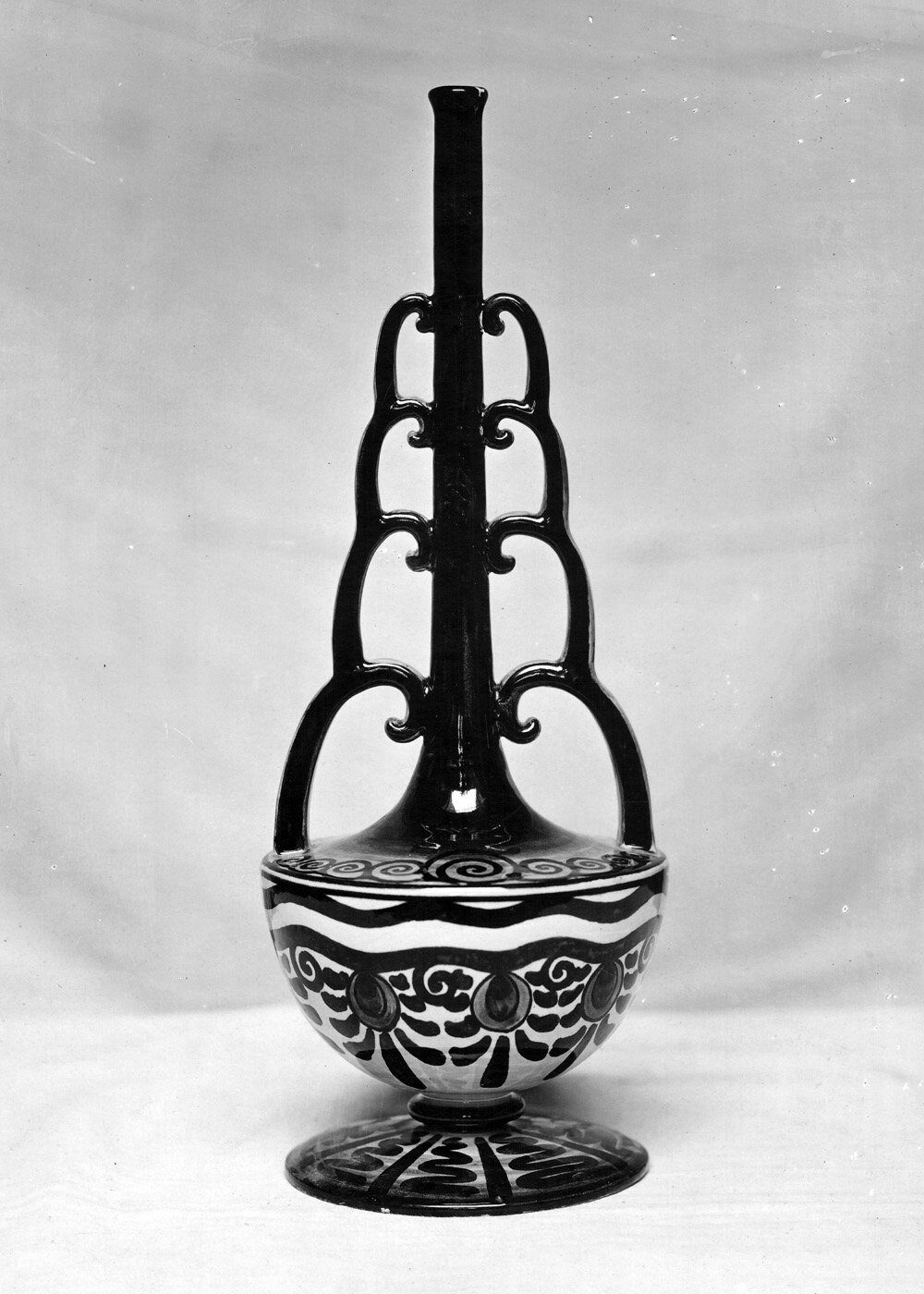Ignorato dalla stampa e dalle emittenti locali, ma vivacemente accolto da un nutrito gruppo di appassionati d’arte e di storia ascolana, si è celebrato ieri presso la Libreria Rinascita il 125° dell’artista, col patrocinio del Comune di Ascoli.
Ascoli, 10 Novembre 2025 – di Simonetta Castelli
Ignorato dalla stampa e dalle emittenti locali, ma vivacemente accolto da un nutrito gruppo di appassionati d’arte e di storia ascolana, ieri, 9 Novembre 2025, si è celebrato presso la Libreria Rinascita di Ascoli Piceno il 125° dell’artista, col patrocinio del Comune di Ascoli.
Ci ha sorpreso molto la totale assenza di reporter e rappresentanti dei media – nonostante fosse stato diffuso un ricco press kit corredato da testi, note biografiche e immagini – così come la notabile scarsa partecipazione di personalità che coprono ruoli “ufficiali” e/o di rilievo nella città. Fa eccezione a questo proposito la smagliante presenza della coinvoltissima e profondamente dedita Patrizia Petracci, sempre generosissima con il suo tempo e la sua energia e sinceramente appassionata soprattutto nel contesto della ceramica artistica.
L’evento ha avuto perciò il sapore intimo e caldo di un ritrovarsi tra amici, coltivando affinità e raccontando storie che ci accomunano, ci ispirano e ci stimolano. Il Professor Stefano Papetti, sempre competentissimo e immensamente gradevole da ascoltare, ha ancora una volta sottolineato la singolarità che caratterizza Aldo Castelli come artista, la sua camaleontica poliedricità e allo stesso tempo la sistematica coerenza a un suo indefinibile ed elusivo filo conduttore fatto semplicemente di devozione all’arte e al creare. Le figlie di Aldo presenti, insieme a Luisa Alleva Matricardi, hanno confermato anche quell’aspetto della sua persona che appunto, nel suo amore per l’arte, lo tenne sempre coerente a ciò che lo muoveva dal profondo, mai lasciandosi motivare dalla seducente attrattiva di fama, posizione, o successo materiale.
Il professor Michele Picciolo ha messo in luce uno dei ruoli più ignorati o sottovalutati di Aldo Castelli, ovvero il suo valore come insegnante e “timoniere” dell’educazione artistica in Ascoli tra gli anni ’50 e ’60 e fino alla sua morte nel 1965. Il suo fu un ruolo realmente pioneristico sotto molti aspetti e di grande impatto, e intere generazioni conservano di lui un ricordo pieno di stima e riconoscenza. Ne fa testo, tra l’altro, il bellissimo documentario su Ascoli “Itinerari Piceni” della fine anni ’50, nato come saggio degli allievi del Consorzio di Istruzione Tecnica, documentario per cui Aldo scrisse il commento parlato e alla cui realizzazione partecipò molto attivamente. Grazie proprio al Professor Picciolo il documentario è stato restaurato in tempi recenti, e ci permette di avere un’esperienza ravvicinata con una realtà ormai persa nel tempo, in una Ascoli irriconoscibile circondata da un contesto rurale che ha ritmi e aspetti inconcepibili per questo secolo.
Pur nella sua candida qualità quasi amatoriale, il documentario ha già tutti gli elementi di un perfetto video promozionale sul territorio, ed è stato letteralmente il primo lungometraggio del genere ad Ascoli; e considerando i mezzi e le risorse disponibili all’epoca, che oggi verrebbero visti come primitivi, pare legittimo dire che merita grandi elogi.
Un evento, in conclusione, molto godibile, nonostante sia stato quasi improvvisato, ma vivacissimamente animato da tutti quelli che vi hanno partecipato. È mancato, purtroppo, il tempo di gustarci il ricco corredo di immagini che volevano illustrare la prolifica produzione di Castelli nella sua pur breve vita. Vorremmo poter sperare in un’occasione futura in cui venga riconosciuto – se non con pompa e sonorità, perlomeno con una giusta dose di ufficialità e ossequio – il valore umano e artistico di un personaggio della storia culturale ascolana che certamente merita di essere conosciuto dalle nuove generazioni e ricordato da quelle che a poco a poco stanno “uscendo di scena”.
Voglio concludere citando un paragrafo di un articolo che mio padre Aldo scrisse in occasione dei festeggiamenti per il centenario della nascita di San Serafino da Montegranaro, articolo che illustra uno splendido e luminosamente mistico dipinto del suo Maestro Mussini sulla vita del Santo – e in cui Aldo coglie l’occasione per esprimere il suo rammarico riguardo alla tiepida qualità dei riconoscimenti critici sul valore artistico di Mussini.
Scrive:
Quella di saper vedere e sentire il bello è ricchezza di pochi, ed è ricchezza che non si perde e non si prodiga, la sola che non subisce oscillazioni e deprezzamenti.
[…] Se taluni critici non sanno o non vogliono esaltare l’opera di un maestro il cui valore è di molto superiore alla sopravvissuta fama, sappiano almeno le persone di gusto raffinato e sensibile apprezzare le migliori espressioni della [sua] arte, tutte o quasi tutte custodite nella nostra città o in paesi vicinali e per la maggior parte ignorate.
Il Mussini, che tanto amò la nostra città – che considerò sua seconda patria – merita da parte nostra assai più che un fugace ricordo e un frettoloso tributo di ammirazione.
Quando leggo questo passaggio, ho l’impressione che, per un bizzarro disegno del fato, la storia si ripeta. E prendo a prestito le stesse parole per applicarle a nostro padre: che tanto amò la nostra città … e merita da parte nostra assai più che un fugace ricordo e un frettoloso tributo di ammirazione.
Spero di vivere abbastanza da vedere un più adeguato tributo – non frettoloso e non distratto – ad Aldo Castelli, l’artista, l’uomo, l’insegnante. Una mostra antologica non è stata organizzata in città dal lontano 1965, anno della sua morte. Sono convinta che sarebbe un evento che riscuoterebbe notevole interesse e apprezzamento di pubblico.
Colgo l’occasione per ringraziare nuovamente la Libreria Rinascita che ha ospitato l’evento di ieri, e Líbrati editore che l’anno scorso ha pubblicato la splendida monografia curata dal Prof. Papetti, giunta finalmente in stampa dopo decenni di gestazione col patrocinio del Comune di Ascoli Piceno e generose donazioni da tutto il mondo.
Il libro è davvero splendido. Chi volesse ordinarlo può farlo QUI
ULTERIORI LINK:
Documentario “Itinerari Piceni” QUI
Diapositive “Aldo Castelli 125°” QUI
















